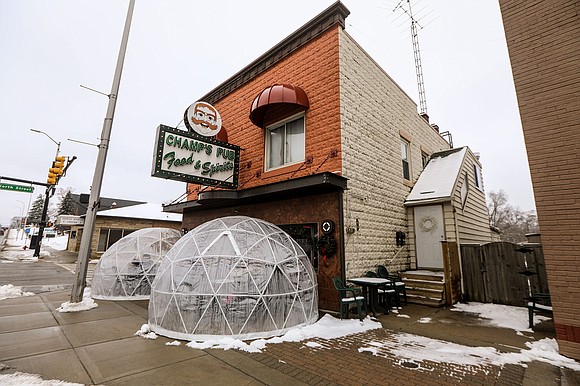Small businesses can start applying for new PPP loans on Monday
CNN/Stylemagazine.com Newswire | 1/11/2021, 12:02 p.m.

By Jeanne Sahadi, CNN Business
(CNN) -- For millions of small businesses still struggling to make ends meet, today's the first day to apply for a new, potentially forgivable federal loan.
The Paycheck Protection Program is re-opening Monday. But initially it will only be available to businesses applying at community financial institutions. Those are banks and lenders that provide funding for small businesses in underserved communities, many of which had a hard time securing loans during the previous rounds of PPP lending or didn't apply.
The US Treasury and the Small Business Administration said they will open the program to all small businesses soon. While there is no exact date yet, the Consumer Bankers Association said it expects it to happen sometime during the week of January 18.
The latest Covid relief package signed into law at the end of December included $284 billion for additional lending to eligible businesses, including those that already received a loan months ago.
The package also included measures intended to make PPP loans more flexible for all small businesses, more helpful to hard-hit restaurants and more accessible to micro businesses than it was in the first two rounds of lending.
Here are six ways the program has changed for this latest round:
Businesses may now get a second PPP loan. Businesses that got a PPP loan when the program first went into effect now may apply for a "second draw," so long as they're not a public company, don't employ more than 300 people, have used or will fully use their first PPP loan for authorized uses, and can show at least a 25% drop in gross receipts in the first, second or third quarters of this year compared to the same quarter in 2019.
Targeted funds are being made available for the most vulnerable businesses. Specific amounts -- ranging from $15 billion to $25 billion -- are earmarked for community development financial institutions -- which typically lend to minority-owned businesses in underserved communities -- and for businesses with fewer than 10 employees, as well as those in low-income areas.
Restaurants can get bigger loans. Most eligible businesses may get a loan equal to 2.5 times their average monthly payroll expenses, just as before. But restaurants and lodging businesses may now apply for loans equal to 3.5 times monthly payrolls.
No loan, however, may exceed $2 million, down from the previous cap of $10 million.
There is greater flexibility in how the loan may be used and still be fully forgiven. For any PPP loan to be fully forgiven, at least 60% of the money must be used for payroll expenses. But the remaining 40% or less may be used to cover an even broader swath of business expenses than was the case during the initial rounds of PPP lending.
Beyond mortgage interest, rent and utility payments, the loan now may be used to cover the costs of personal protective equipment and other expenses incurred to meet Covid restrictions, as well as certain operations, property damage and supplier costs.
The forgiveness process is simpler. In order to have a PPP loan forgiven, businesses that borrowed $150,000 or less will simply need to submit a one-page certification that includes the number of employees the business retained as a result of the loan, an estimate of how much of the loan was spent on payroll and the total loan amount. Borrowers must also attest that the information is accurate and that they complied with loan requirements.
This should help many small businesses that got PPP loans during earlier lending rounds. A full 87% of the loans were below $150,000, according to the Small Business Administration.
The tax break for PPP loan recipients just got bigger. While the loans will be tax-free for recipients if they're used for authorized purposes, the latest Covid relief package sweetened the pot further.
Businesses normally deduct their payroll and operating expenses from their gross income. Now, even if those expenses were largely paid for by the tax-free loan, they will still be deductible.
For more information on the reopening of the program and changes to it, the Treasury Department and Small Business Administration put out guidance here on Friday.




